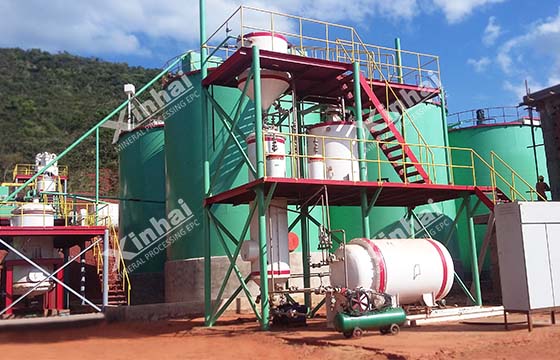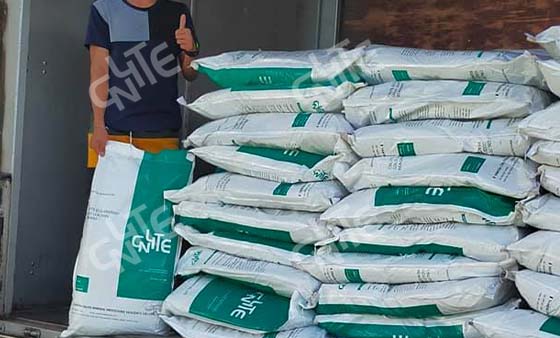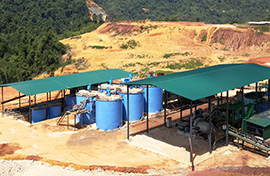-
 E-mail
xiaerrachel@gmail.com
E-mail
xiaerrachel@gmail.com
-
 Call Us
008617710157246
Call Us
008617710157246
 E-mail
xiaerrachel@gmail.com
E-mail
xiaerrachel@gmail.com
 Call Us
008617710157246
Call Us
008617710157246
2025-07-29 Views: 1520
Warm Tip: If you want to know more information, like quotation, products, solutions, etc., please Click here ,and contact us online.

Gold mining is a vital industry in many African nations, including Zimbabwe, Tanzania and Ghana. The electrowinning of gold is a powerful and efficient method to recover gold from solution, often producing very pure metal that is ready for smelting .
But like any technical process, things can go wrong. Understanding the electrowinning process of gold and knowing how to fix common problems can make a huge difference to your profits and safety. This guide is written in simple, clear English to help miners identify and solve the top ten most common issues in gold electrowinning.
After gold is dissolved into a solution (usually using cyanide), the gold-rich solution is pumped into a special container called an electrowinning cell. This cell contains two types of electrodes: anodes and cathodes. When you pass an electric current through the solution, a chemical reaction happens. The gold ions in the solution are attracted to the cathode (often made of steel wool or stainless steel plates) and deposit onto it as solid metal . After some time, you can remove the gold from the cathode.
Now, let's look at the problems you might face and their solutions.
The Issue: Sodium cyanide is highly toxic. It can be fatal if ingested, inhaled, or absorbed through the skin . As mentioned in Issue #4, if the pH of the solution becomes acidic, it releases deadly hydrogen cyanide gas. Improper storage and disposal of cyanide waste can also poison local water sources and harm the environment .
The Solution:
Strict Safety Protocols: Always wear the correct PPE: chemical-resistant gloves, safety goggles or a face shield, and a respirator if there is any risk of gas.
Maintain High pH: This is the most critical safety step to prevent HCN gas formation. Always keep the pH above 11.
Secure Storage and Disposal: Store cyanide in a locked, dry, and well-ventilated area away from acids. Follow local regulations for the detoxification and disposal of cyanide waste.
Explore Alternatives: The industry is slowly moving towards less toxic chemicals like thiosulfate or glycine. CNLITE eco-friendly gold leaching reagent can 100% take place of sodium cyanide for gold processing and refining, including gold CIP, CIL, heap leaching, pool leaching and other cyanide process.

The Issue: Using the wrong amount of electrical power is a very common mistake. Some operators think that more power means more gold, faster. But this is not true. If the voltage is too high (for example, above 3.5 volts), it can actually reduce the efficiency of gold recovery. This is because the extra energy starts to break down water instead of depositing gold, a process that creates a lot of gas bubbles and wastes electricity .
The Solution:
Check Your Power Supply: Use a multimeter to regularly check the voltage and current of your electrowinning cell.
Target the Right Voltage: Aim for a stable voltage, typically between 2.5 and 3.5 volts. The best voltage depends on your specific setup, but starting lower and monitoring the results is a good strategy .
Control the Current Density: Don't just increase the power. Control the current density (the amount of current per area of your cathode). Too high a current density leads to poor quality gold deposits and wasted energy.
The Issue: The temperature of your electrolyte solution is more important than you might think. A warmer solution can sometimes help the gold deposit a little faster. However, if the solution gets too hot (for example, above 60°C), it can cause the cyanide to break down, making it useless for keeping the gold dissolved. This not only stops the process but can also release dangerous hydrogen cyanide gas if the pH is not controlled.
The Solution:
Monitor Temperature: Use a thermometer to keep an eye on the solution's temperature.
Provide Shade: In hot tropical climates like those in Ghana and Tanzania, ensure your electrowinning setup is in a shaded, well-ventilated area to prevent it from overheating in the sun.
The Issue: The pH level measures how acidic or alkaline your solution is. For gold electrowinning with cyanide, the pH must be kept high (alkaline), typically above 11. If the pH drops too low (below 10), the cyanide (CN⁻) can turn into deadly hydrogen cyanide (HCN) gas . A low pH can also dramatically reduce the efficiency of gold deposition .
The Solution:
Regular pH Testing: Use pH test strips or a digital pH meter to check the solution at least once per shift.
Add Caustic Soda (Sodium Hydroxide): If the pH is too low, carefully add small amounts of caustic soda (NaOH) to the solution to raise it. Always wear proper personal protective equipment (PPE), including gloves and goggles, when handling caustic soda.
The Issue: The cathode is where your gold collects. Over time, two problems can occur. First, the cathode can become "fouled" or "passivated," meaning a thin layer forms on its surface that stops electricity from flowing properly. Second, as gold sludge builds up, it can block the flow of the solution through the cathode material (like steel wool), making the process less efficient .
The Solution:
Use Modern Cathode Designs: Instead of just packing steel wool tightly, consider using structured cathodes like rigid arrays or wrapped designs, which allow for better solution flow and easier cleaning.
Regular Cleaning: Many modern electrowinning cells have built-in high-pressure washing systems to clean the gold sludge off the cathodes without having to take them apart. If you don't have this, you will need to remove and manually wash the cathodes.
Don't Overload: Avoid putting too much gold on the cathode before harvesting. A common guideline is to keep the gold-to-steel-wool loading ratio low to maintain high efficiency.

The Issue: Electricity is expensive. Gold mining, and especially the electrowinning process of gold, uses a lot of power. For small-scale miners, this high operational cost can significantly reduce profits. Wasting electricity through an inefficient setup (like using too much voltage) makes the problem even worse.
The Solution:
Consider Solar Power: In sunny regions, investing in solar power can be a changer. Solar-powered systems can run your electrowinning cells during the day, drastically cutting your electricity bills and making your operation more sustainable.
Maintain Your Equipment: Keep all electrical connections clean and tight. Corroded or loose connections create resistance and waste energy.
The Issue: In many artisanal and small-scale mining (ASGM) areas, mercury is used to extract gold. If you are processing tailings or concentrates that have been in contact with mercury, that mercury will end up in your cyanide solution. During electrowinning, the electrical process can heat the solution and vaporize the mercury, creating a toxic vapor that is extremely dangerous to inhale .
The Solution:
Avoid Mercury: The best solution is to completely stop using mercury. Programs like the Global Mercury Partnership are promoting mercury-free techniques .
Use a Retort: If you must handle concentrates with mercury, use a retort to safely remove and capture the mercury before the material goes into the cyanide leaching process.
Extreme Ventilation: Ensure your electrowinning area has very powerful ventilation to pull any potential mercury vapor away from workers. This is a last resort; removing mercury beforehand is far safer.
The Issue: Your solution rarely contains only gold. Other metals, like copper and silver, are often present. These metals can also deposit onto the cathode along with the gold. This reduces the purity of your final product and lowers the overall current efficiency because your electricity is being used to deposit metals you don't want.
The Solution:
Know Your Ore: Understand the mineralogy of your ore. If it is high in copper, you will need to manage your electrowinning process more carefully.
Selective Electrowinning: By carefully controlling the voltage, you can sometimes deposit one metal more than another. However, this can be complex.
Refining: Be prepared that your final gold product may need an additional refining step to remove copper and other impurities to get the highest price.
The Issue: Many gold-producing regions in Africa, like the coastal areas of Ghana and Tanzania, have very high humidity. High humidity (relative humidity above 75%) dramatically speeds up the corrosion (rusting) of metal parts. This can damage the electrowinning cell, electrical contacts, support structures, and pumps, leading to equipment failure, safety hazards, and costly repairs.
The Solution:
Build a Shelter: Protect your electrowinning equipment from rain and direct sun with a simple roof and walls. This will help reduce the local humidity.
Use Corrosion-Resistant Materials: Whenever possible, use materials like stainless steel or strong polypropylene for cell construction and plumbing.
Regular Inspection and Cleaning: Pay close attention to electrical connections. Clean any signs of corrosion immediately to ensure a good connection and prevent energy loss. Use protective coatings or grease on non-contact metal surfaces.
The Issue: Electrowinning is a science. Without proper training, miners often learn by trial and error, which can be inefficient, costly, and dangerous. In many areas, formal training manuals and expert support are not easily available . This knowledge gap is one of the biggest barriers to improving gold recovery.
The Solution:
Seek Training: Take advantage of any training programs offered by government agencies, NGOs, or mining organizations, which have run projects in Tanzania and other countries .
Create Checklists: Develop simple, step-by-step checklists for daily operations: checking pH, temperature, voltage, cleaning schedules, and safety procedures.
The above are ten problems and solutions about electrowinning process of gold extraction. If you are looking for a substitute for sodium cyanide or a need to build an desorption electrolysis system beneficiation plant, you can contact our customer service staff and we will serve you wholeheartedly!
No. 188, Xinhai Street, high-tech Industrial Park, Fushan District, Yantai, Shandong, China.

Please leave your message here! We will send detail technical info and quotation to you!